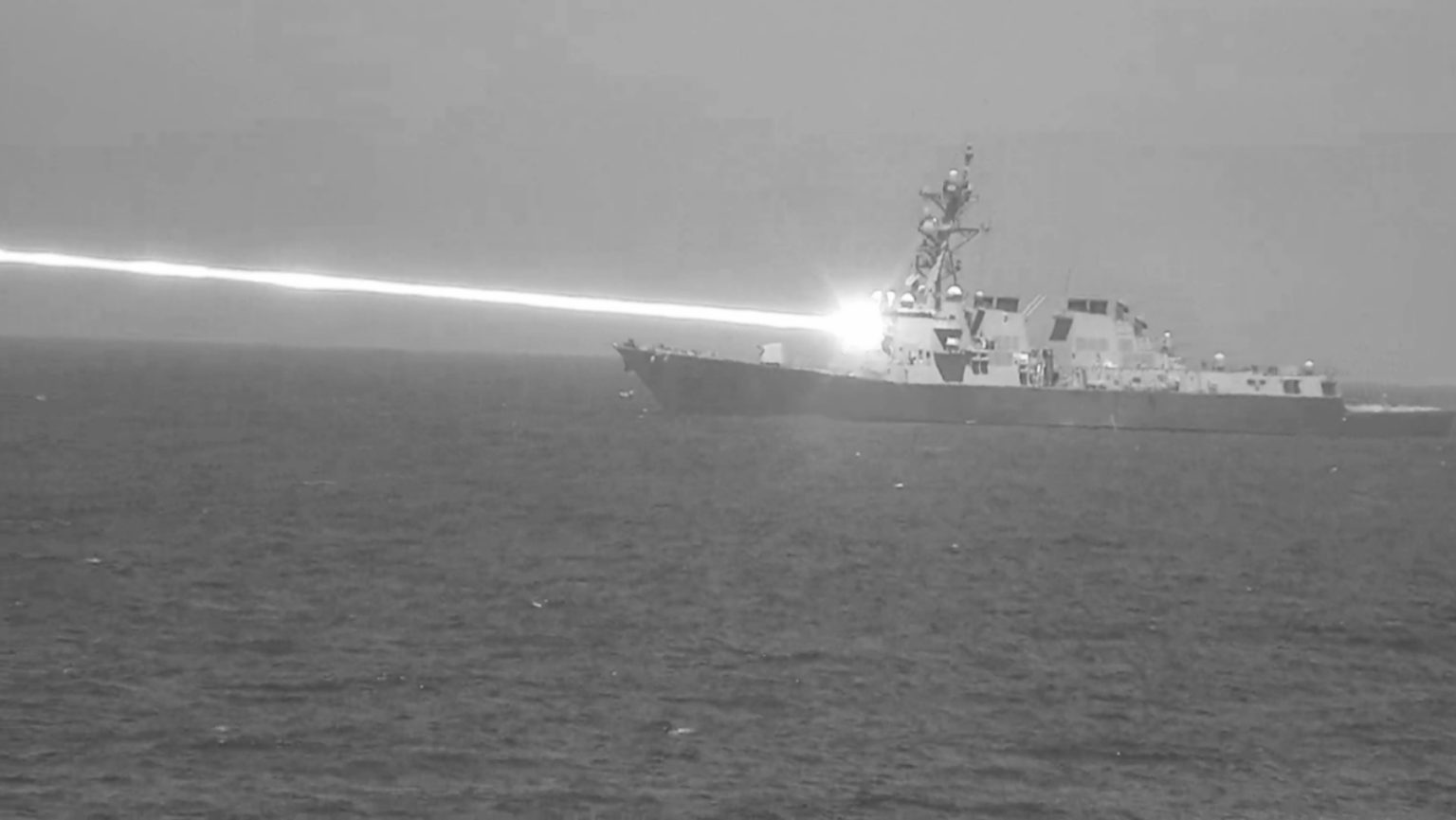The USS Preble, a U.S. Navy destroyer equipped with a cutting-edge laser weapon system, recently conducted a successful test in the Western Pacific, firing its high-energy laser at a drone target. This event underscores the U.S. Navy’s commitment to modernizing its fleet and enhancing its defensive capabilities in a region characterized by growing geopolitical tensions. The Preble, now stationed in Yokosuka, Japan, represents a significant advancement in naval warfare technology, bringing the power of directed energy weapons to bear against emerging threats such as unmanned aerial vehicles.
The laser weapon system, known as HELIOS (High Energy Laser with Integrated Optical-dazzler and Surveillance), offers several advantages over traditional ship-based defense systems. Its ability to engage targets at the speed of light provides an unparalleled response time, crucial for intercepting fast-moving threats like drones and small attack craft. Moreover, the cost per shot for a laser is significantly lower than that of missiles, making it a more economical solution for countering relatively inexpensive drone swarms. The HELIOS system also boasts integrated surveillance capabilities, enabling it to perform long-range target identification and battle damage assessment.
The successful drone engagement test, documented in a recent report by the Office of the Director, Operational Test and Evaluation (DOT&E), highlights the growing importance of directed energy weapons in modern naval warfare. As drones and other unmanned systems become increasingly prevalent, the need for effective countermeasures becomes paramount. The HELIOS system offers a precise and cost-effective solution, capable of neutralizing these threats without the collateral damage associated with traditional explosive weaponry. The deployment of this technology on the USS Preble marks a significant step forward in the U.S. Navy’s efforts to maintain a technological edge in the Pacific.
The Preble’s deployment to Japan signals a strategic shift in U.S. naval presence in the region. The Western Pacific, particularly the East China Sea, has witnessed increasing military activity, including the presence of Chinese military drones near Japanese islands. The Preble’s advanced capabilities, including the HELIOS laser weapon system, provide a strong deterrent against potential threats and demonstrate the U.S. commitment to its allies in the region. The placement of this advanced warship in Japan reinforces the U.S. Navy’s dedication to maintaining peace and stability in the Indo-Pacific region.
The integration of the HELIOS system on the USS Preble has been met with enthusiasm by U.S. Navy officials and defense contractors alike. Captain Justin Harts, commander of Destroyer Squadron 15, praised the Preble’s arrival, highlighting the value of its advanced capabilities. The U.S. Pacific Fleet emphasized the importance of positioning the most capable ships forward in the Indo-Pacific, a region characterized by complex security challenges. Lockheed Martin, the developer of the HELIOS system, underscored the system’s role in enhancing overall combat effectiveness and providing additional protection for sailors.
Looking ahead, the successful demonstration of the HELIOS system on the USS Preble raises questions about the future of this technology within the U.S. Navy. Whether or not other destroyers stationed in Japan will be equipped with similar laser weapon systems remains to be seen, but the Preble’s deployment serves as a crucial testbed for the viability and effectiveness of directed energy weapons in a real-world operational environment. As the geopolitical landscape continues to evolve, the U.S. Navy’s investment in advanced technologies like the HELIOS system will likely play an increasingly important role in maintaining its maritime dominance and ensuring the security of its allies. The continued development and deployment of these systems could signify a paradigm shift in naval warfare, moving away from traditional kinetic weapons and embracing the precision and efficiency of directed energy.

